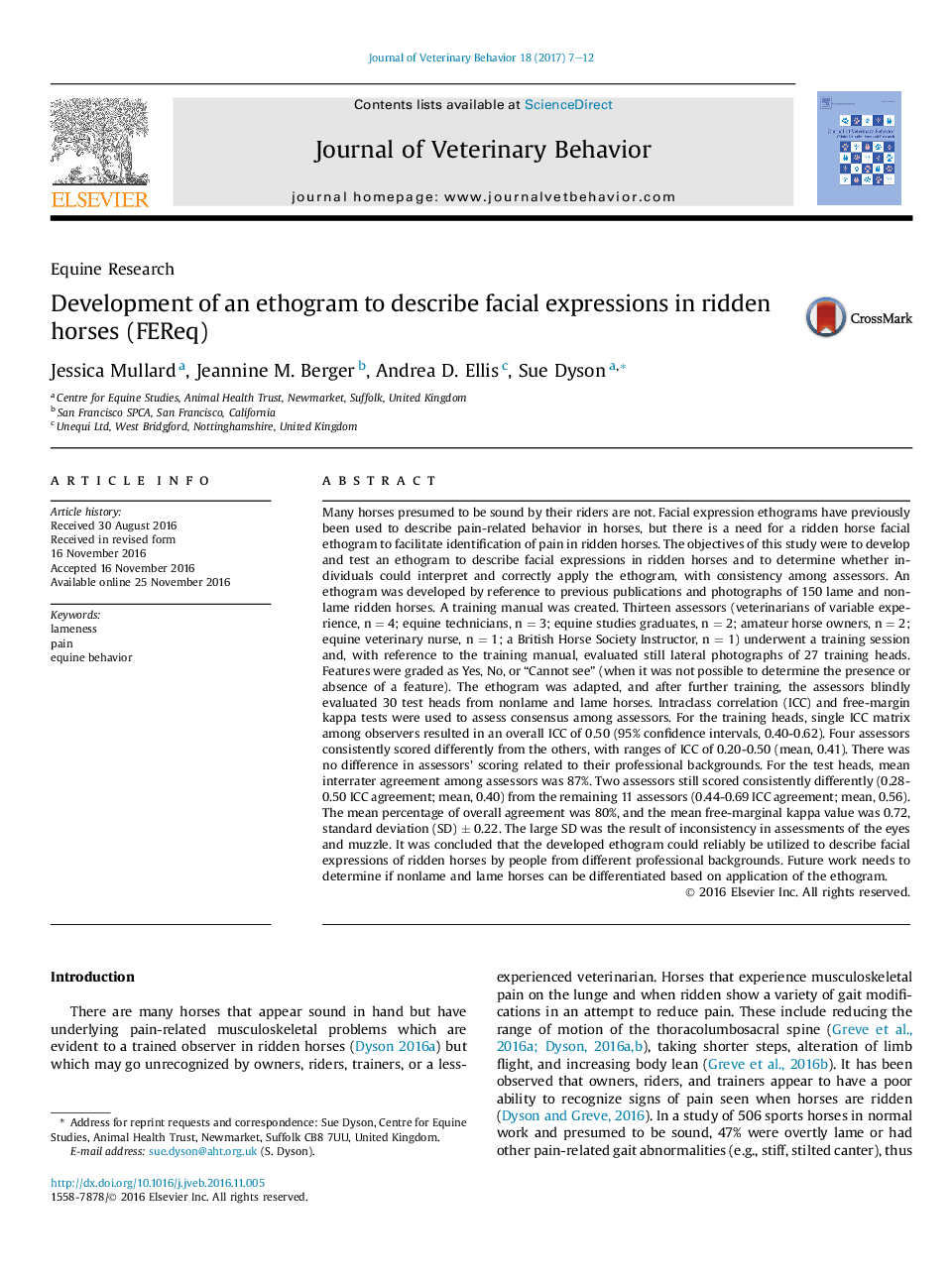| Article ID | Journal | Published Year | Pages | File Type |
|---|---|---|---|---|
| 5535845 | Journal of Veterinary Behavior: Clinical Applications and Research | 2017 | 6 Pages |
Many horses presumed to be sound by their riders are not. Facial expression ethograms have previously been used to describe pain-related behavior in horses, but there is a need for a ridden horse facial ethogram to facilitate identification of pain in ridden horses. The objectives of this study were to develop and test an ethogram to describe facial expressions in ridden horses and to determine whether individuals could interpret and correctly apply the ethogram, with consistency among assessors. An ethogram was developed by reference to previous publications and photographs of 150 lame and nonlame ridden horses. A training manual was created. Thirteen assessors (veterinarians of variable experience, n = 4; equine technicians, n = 3; equine studies graduates, n = 2; amateur horse owners, n = 2; equine veterinary nurse, n = 1; a British Horse Society Instructor, n = 1) underwent a training session and, with reference to the training manual, evaluated still lateral photographs of 27 training heads. Features were graded as Yes, No, or “Cannot see” (when it was not possible to determine the presence or absence of a feature). The ethogram was adapted, and after further training, the assessors blindly evaluated 30 test heads from nonlame and lame horses. Intraclass correlation (ICC) and free-margin kappa tests were used to assess consensus among assessors. For the training heads, single ICC matrix among observers resulted in an overall ICC of 0.50 (95% confidence intervals, 0.40-0.62). Four assessors consistently scored differently from the others, with ranges of ICC of 0.20-0.50 (mean, 0.41). There was no difference in assessors' scoring related to their professional backgrounds. For the test heads, mean interrater agreement among assessors was 87%. Two assessors still scored consistently differently (0.28-0.50 ICC agreement; mean, 0.40) from the remaining 11 assessors (0.44-0.69 ICC agreement; mean, 0.56). The mean percentage of overall agreement was 80%, and the mean free-marginal kappa value was 0.72, standard deviation (SD) ± 0.22. The large SD was the result of inconsistency in assessments of the eyes and muzzle. It was concluded that the developed ethogram could reliably be utilized to describe facial expressions of ridden horses by people from different professional backgrounds. Future work needs to determine if nonlame and lame horses can be differentiated based on application of the ethogram.
